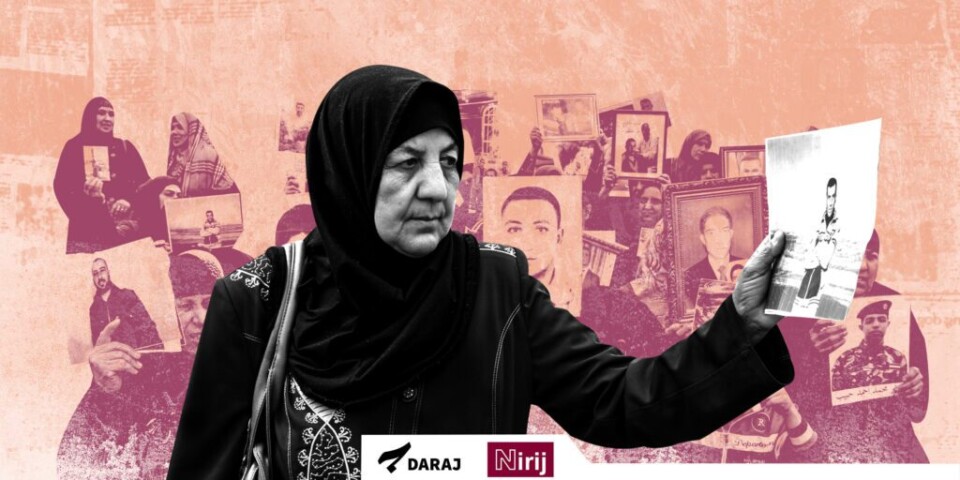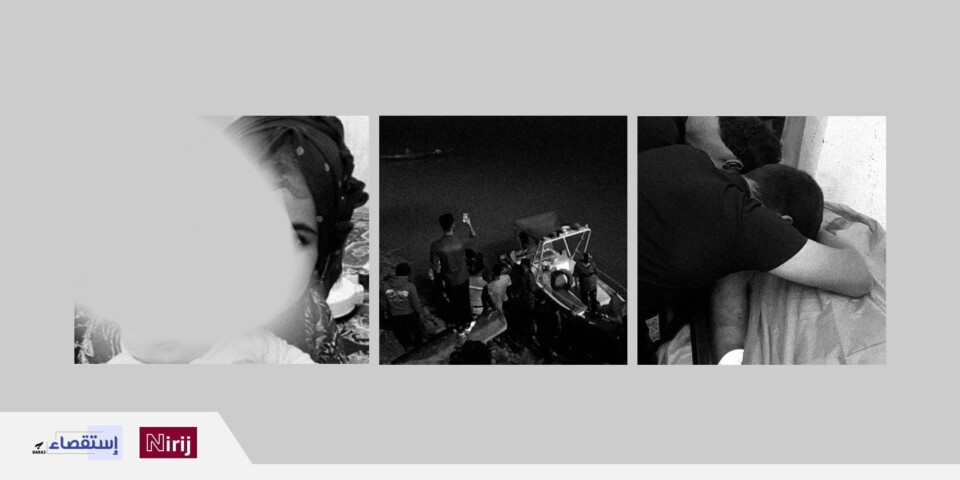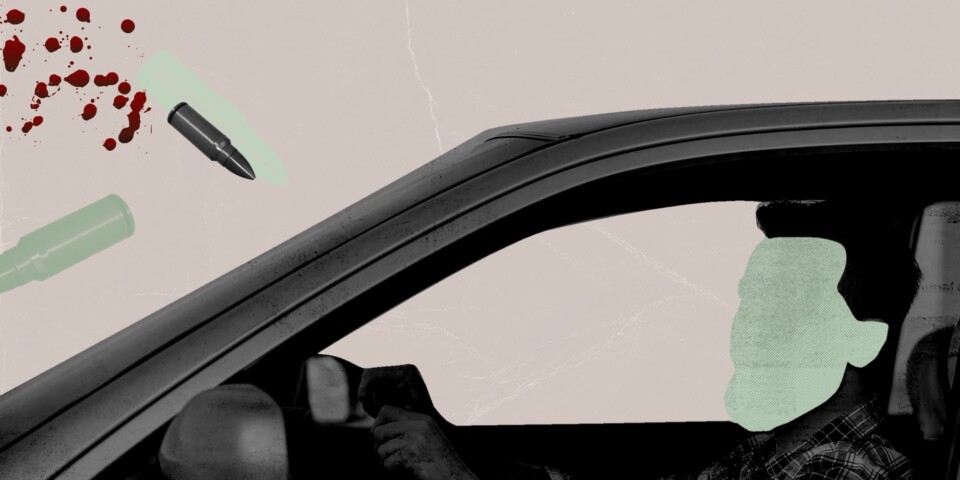

Baghdad Investigative Team:
On 10 January 2020, in Basra, Iraq, unidentified gunmen on a motorbike shot at journalist Ahmed Abdul Samad, a correspondent of the Dijlah satellite TV channel, killing him immediately with a fatal shot to the head. His colleague, photojournalist Safaa Ghali, was transferred to Basra General Hospital after being shot three times in the chest and died as a result of severe injuries.
The two men, who worked as journalists in several institutions, were driving their car around 7 pm when the attack occurred, near the Assyrian Club in Basra. They had just ended their coverage of the massive demonstrations that took place in Basra, including the sit-in that took place in front of the Police Headquarters building after the arrest of a number of individuals. The detainees were soon released after the building was surrounded by their fellow protesters.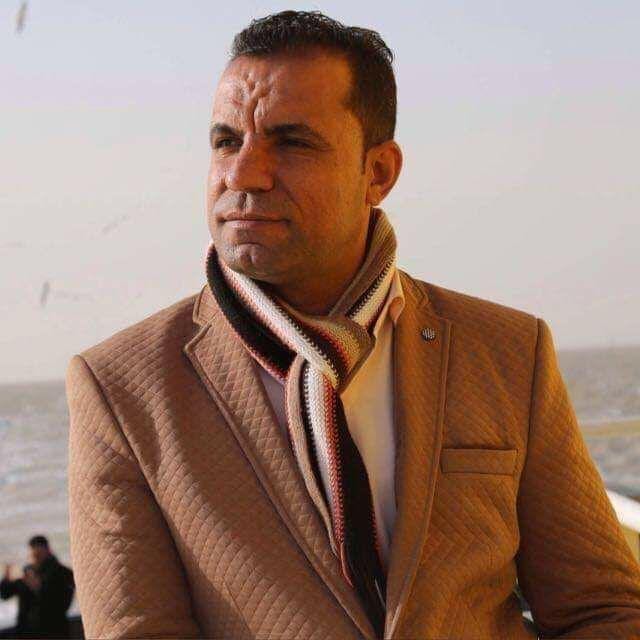
Abdul Samad, 39 years old, was a courageous journalist who had been working as a journalist since 2003 and had years of experience working with several television channels. He had made every effort to convey the voice of demonstrators in Basra, and he covered many hot events and uncovered many sensitive files, whether related to corruption or the influence of militias in managing the economy and security structures in the third largest city in Iraq.
Prior to his killing, Abdul Samad received many threats and warnings from militants due to his work as a journalist and his coverage of the killing of protesters, and due to his comments on the influence of armed groups in Basra, all of which did not stop him from performing what he described as his “mission in life”.
His “mission in life” was enough to end his life at the hands of one of the “Death Squads” in Basra, led by a young man in his thirties who possessed with his group the freedom of movement for years to carry out a series of assassinations as well as the seizing of large investments in the heart of Basra, but who within the security services appeared as a mere criminal “coming from the darkness”, as government data did not indicate his affiliation or connections with his death squad.

Local information confirmed that members of the death squad, which the government uncovered, were able to move completely freely under the cover of the PMF “Popular Mobilization Forces” and other influential armed groups. The death squad leader and its most prominent members were able to take shelter in a specific location in Basra and then they were able to flee outside
In light of the inability of the authorities with their multiple agencies to stop them for fear of an “internal war” as some described it, they ended up, according to intelligence information, in Jurf al-Sakhar, the area where the militias rule, and where the state has no presence.
Last hours
“We were a group of protesters stationed in front of the Basra police command, where we took a sit-in there demanding the release of our colleagues who were taken to the police headquarters. Abdul Samad was covering our sit-in in front of the headquarters and filming with his phone camera while Safaa Ghali was filming other events of the sit-in” said young activist Ali al-Nouri.
Covering that sit-in in front of the police headquarters and taking a number of demonstrators to the headquarters was the last thing Abdul Samad documented before leaving the scene with his colleague, Safaa.
Al-Nouri, who was forced to leave his city due to the threats he had received with many of his fellow activists in the demonstrations, who were accused by the armed groups of “treason and espionage”, noticed as he returned to the central sit-in square with his fellow protesters after releasing the detainees, what he considered a suspicious matter that raised his fears: “A white Navara pickup truck parked on the side of the street near the police headquarters and the site of the assassination (Al-Matahen Street). Two people with beards, hats and suspicious faces were in the truck”.
The rear windows of the car were tinted, which prevented al-Nouri from knowing if anyone other than the two bearded men was sitting in the back. Al Nouri continues: “The license number plate was not familiar, it was not the type used in Basra governorate or even Baghdad, I suspect it is from one of the governorates of the Kurdistan region. “.
The news of the assassination reached the sit-in square, which is about 20 minutes on foot from the police headquarters, before Ali al-Nouri and the released protesters arrived there.
A History of Threats
Abdul Samad was known throughout Iraq for his courage in expressing his views, and he was known for his stands that support the protestors demands and criticize the authority and its parties, which “angered the parties and their militias against him”.
Talib Al-Budairi, a friend of Abdul Samad, confirms Abdul Samad’s habit of receiving threats without caring about them, while making sure that “his family does not know anything about these threats”
Al-Budairi added: “Abdul Samad was threatened many times. He spoke to me during his work with NRT channel about a threatening call from a private number. (I am afraid if my family and my mother know about these threats, I am afraid that they will grieve over me) he said it in a throaty voice”.
Since the 2015 protests, Abdul Samad had been the target for the armed parties due to his boldness in criticizing them. During the Basra protests that were ignited in 2018 and with the escalation of targeting and assassinating activists, Abdul Samad increased his criticism, which became very clear and direct despite the increasing risks, especially during his work with the “Dijlah” channel, which was accused by the militia’s cyber armies of “supporting the demonstrations.”
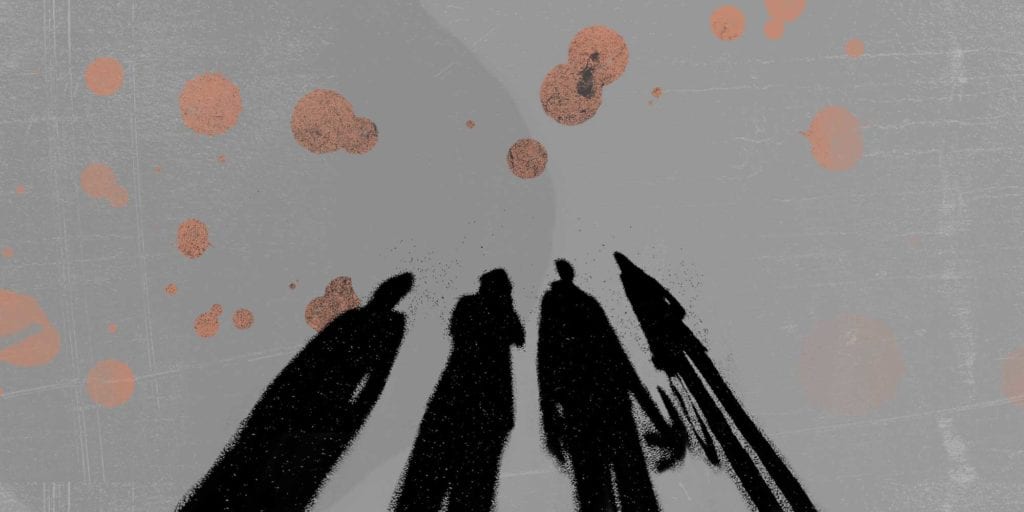
When the protests calm down, Abdul Samad used to monitor and cover other areas of government failure and pursue suspicions of corruption by the political parties that extended to the ports and borders of Basra.
Another friend of Ahmed Abdul Samad was journalist Montazer Al-Bakhit. We met him in his hideout outside Basra, which he was forced to leave as a result of the “deterioration” of freedom of expression, as he says: “During the demonstrations in 2015, I received many threats, it was repeated in 2018 and developed into a summons, but in 2019 it became more dangerous; a lawsuit was filed against me by the Shock Forces for incitement, and they forced me to flee outside Iraq until the case was dismissed in court. ”
Montazer Al-Bakhit ordeal did not end there, for even after his case dismissal, he could not return to his city. “I received a call from a reliable source warning me not to return to Basra or Baghdad. After inquiring, they told me that there is a group of names, including mine and the name of Ahmed Abdul Samad, that will be targeted by the militias” Montazer said.
That was more than just a threat, and Montazer was not the only one on the list, so he contacted all his colleagues, whose names were listed: “We were all outside Basra, except Ahmed Abdul Samad who refused to leave and stayed in the Basra sit-in square.”
Courage vs. distortion
We managed to access personal mobile phone conversations via WhatsApp, between journalist Ahmed Abdul Samad, and an expert on social media, who would Samad resort to if he fell into a technical problem. During his conversation, Ahmed complains of systematic harassment and incitement that he is being exposed to on social media through sponsored publications, “there is this page that is trying to harm me” Ahmed wrote to his friend in an Iraqi dialect.
After the expert interacted with him and explained some details to him, Ahmed wrote, referring to the director of the page that targeted him, “He is living on blackmail and works in a channel belonging to the Brigades”. Ahmed was “in the demonstrations square from morning till evening,” according to the conversation.
Photo 1, Photo 2, Photo 3: Private conversations
“These phone conversations were not considered in the investigations and were not linked to Ahmed’s murderers” said a source monitoring the investigations since the start.
Before his death, Ahmed broadcasted a video clip on his own account following a campaign of random arrests that the demonstrators were subjected to. In the video he appeared boldly comparing between the October demonstrations and the demonstrations of the parties: “No one was harmed at the demonstrations near the American embassy” in reference to the demonstrations of the armed factions loyal to Iran in front of the doors of the US embassy in December 2019, concluding the clip with a phrase associated with his name after his death, “Our cause is the issue of a HOMELAND. Oh, but you do not have a homeland.”
Video li
Two days before his assassination, Ahmed tweeted in response to the appeal of the daughter of Qassem Soleimani, who was killed with Abu Mahdi Al-Muhandis by an American raid in Baghdad on January 3, 2020, , describing her father as being “killed”, contrary to what the factions and militias loyal to Iran say. He also he criticized “the Iraqis who are fighting on behalf of the eastern neighbor.”
Photo 4: Abdul Samad tweet
In Iraq, the country that ranks 162 out of 180 countries in the Reporters Without Borders Index of Press Freedom, in which 490 journalists were martyred after the year 2003 according to the numbers of the Iraqi Journalists Syndicate, it is normal for Ahmed Abdul Samad’s boldness on social media platforms and his severe attack on loyalists to Iran, at the expense of the interests of their country. His annoying journalistic activity with regard to the ruling parties and forces, were sufficient reasons to distort his work and even target him.
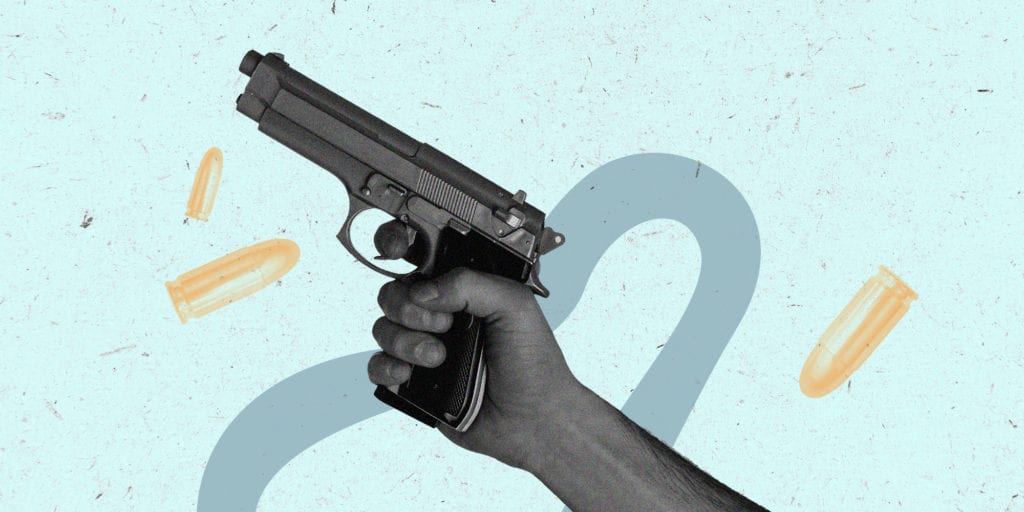
Death Squad
On February 15, 2021, more than a year after the incident, the Iraqi Prime Minister Mustafa Al-Kazemi announced the arrest of what is known as the death squad: “The death gang that terrified our people in Basra and spread death in its beloved streets and took innocent lives, has fallen in the grip of the heroes of our security forces, in preparation for a fair and public trial. ”
The arrested gang carried out the assassination of the civilian activist, Jinan Madhi Al-Shahmani, “Umm Jannat” (49 years old), who was assassinated on January 22, 2020, after gunmen traveling in civilian cars attacked her and her companions in the city of Basra. They also killed journalist Ahmed Abdul Samad and photographer Safaa Ghali in their car. Al-Kazemi added that ” today we have the killers of Jinan Madhi and Ahmed Abdul Samad, and tomorrow will be the day for the killers of Reham and Al-Hashemi and all those murdered,” and concluded his tweet with “Justice will prevail.”
Who are they?
Two days before Al-Kazemi’s tweet, news of the arrest leaked, along with some details, through one of the victims’ relatives of that death squad. The source was Ismail Musabbah al-Waeli, whose brother, the former Basra governor, Muhammad Musabbah al-Waeli, was killed by the death squad on September 27, 2012.
Al-Waeli confirmed during our meeting with him that other names belonging to the gang have not been revealed. “Not only that, but there are also other death gangs in Basra, some of whose members have been arrested and we are awaiting results.”
On the day of Al-Kazemi’s tweet, the (Tactical Experts Cell), which is an Iraqi independent military research and study group, published on its official Facebook page a statement in which other names of the death squad were mentioned. In total, the number of the announced became 11 members, the majority of whom escaped arrest, or their fate was not announced.
Those who were arrested are:
- Aqeel Hadi Waheeb Shukry, an employee of the Basra Oil Company
- Hamzah Kazim Khudhair Al-Eidani, who works as a commissioner in the Judicial Police in Basra
- Khalaf Asaad Khalaf Mansour Al-Lami, a Law student
- Haider Fadel Jabr Al-Rubaie, Director of the Technical Development Contracting Company
As for the fugitives, including the leader of the gang and its prominent members, they are:
- Ahmed Abdul-Karim Al-Rikabi / Ahmed Tawisa / Ahmed Najat, who is the leader of the gang
- Alaa Al-Ghalbi
- Abbas Hashem
- Khalaf Abu Sajjad
- Haider Shambousa
- Ahmad Odeh
- Bashir Al-Wafi
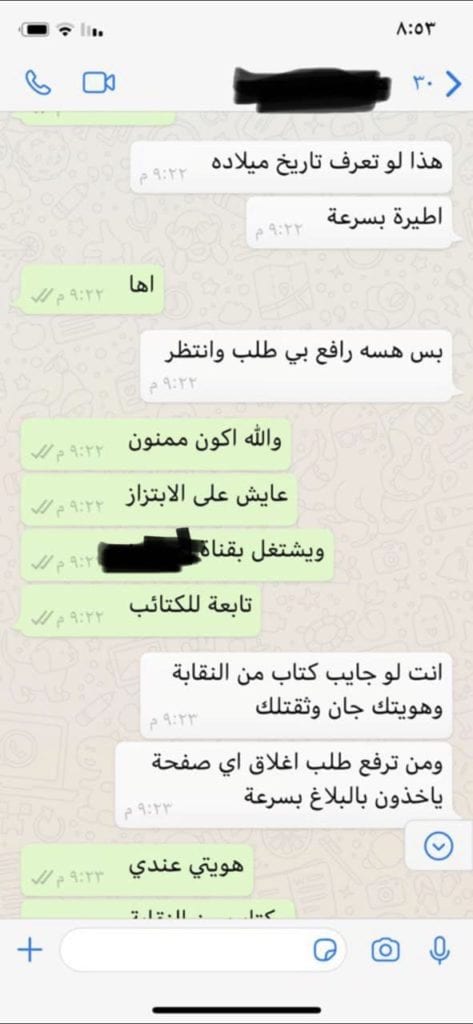
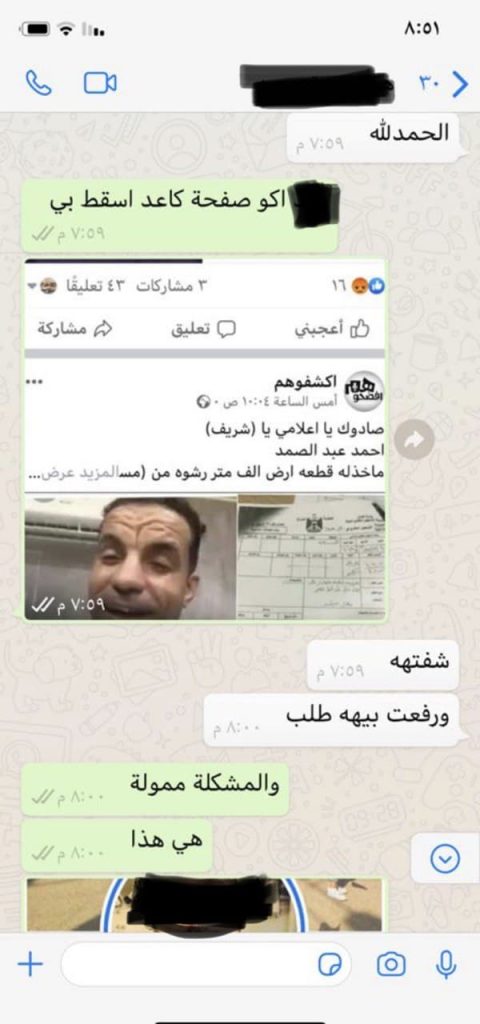
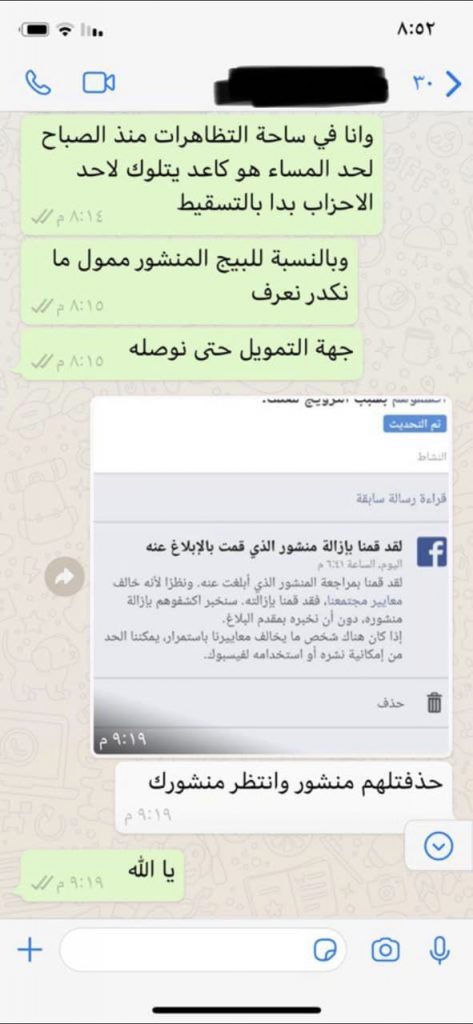
News and analyzes followed, but no other new information about the gang was released. The authorities, at various levels and ranks, did not refer to who is behind the “death squad” led by the thirty-year-old Ahmed Tawisa. However, separate statements by representatives of various security authorities indicated that other gang members fled, and some leaks stated that they are outside the country.
Political analyst Hiwa Othman believes that the death squad story is interesting because it is clearly linked to pro-Iranian factions: “These factions do what they want: kill activists, target diplomatic missions with missiles, and do other actions to strengthen the forces of the non-state.”
An intelligence source confirmed that the four suspects who were arrested are “working within a network of 16 people responsible for the assassinations that took place in Basra, which targeted activists.”
After contacting the commander of Basra Operations, Major General Akram Saddam, who refrained from talking on any topic, we contacted the province’s operations spokesman, Brigadier General Thaer Issa, who confirmed that “investigations are still ongoing and the tracking of the fugitives continues.”
We asked him: What is the truth about the escape of the remaining wanted men to Iran? The speaking brigadier replied: “If they are inside Iraq, arresting them is within our responsibility, but if they are outside the borders of the country, the operation is outside the limits of our authority as Iraqi security forces” explaining that “the government must act through the official authorities and coordinate with international bodies in order to arrest those terrorists and bring them to justice.”
The Basra Operations spokesman did not deny that the fugitives had fled outside the border, but he was careful not to confirm this.
We talked to Ghaith Al-Tamimi, an Iraqi politician who revealed some information linking Iran to the assassinations more broadly. “We have information that there are trained and professional assassination groups that enter Iraq through Mehran, carry out operations and return to Iran. These groups’ members do not know who the target is, they just kill and return without borders on travel procedures, “Tamimi says.
A political source close to the Prime Minister and Commander-in-Chief of the Armed Forces, Mustafa Al-Kazemi, assured us that many wanted persons resort to fleeing outside the borders: “We do not rule out that some of the death squad members are outside Iraq now.”
Writer and journalist Sarmad Al-Taee believes that approaching Iran on the issue may lead to restricting similar subsequent activities of the death squads. He continues: “As for holding Iran accountable for the crimes it did, this is the size of a nuclear bomb, and it is difficult to talk about opening fronts with the Revolutionary Guards and the Lebanese Hezbollah and their powerful arms in Iraq and the region. ”
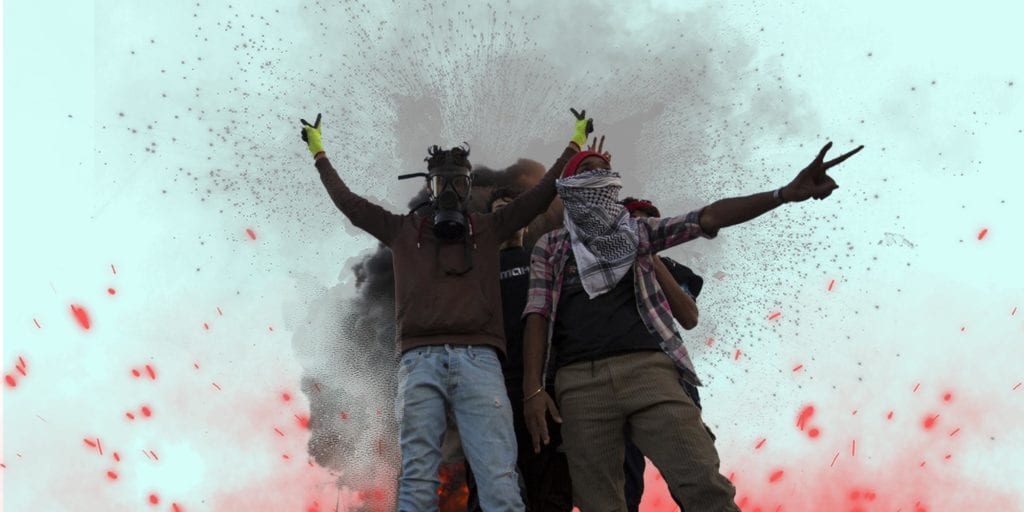
Protected by the Crowd
After long research and analysis, it became clear to us that some of the death squad members, at the time of the arrest operations, fled their places in Basra and took shelter in the presidential palaces that the Popular Mobilization Forces (PMF) take as headquarters in the center of the governorate, which is controlled by the leader of the crowd in Basra, Ammar Abu Yasser.
Ahmed Tawisa and Sayyid Alaa al-Ghalbi are among those sheltered in the headquarters of the crowd, according to what was confirmed by an intelligence source, who added: “There is a possibility to a lesser extent that the accused Abbas Hashem was also with them.”
The security forces in charge of arresting the gang members did not move towards the Popular Mobilization headquarters in Basra, “to avoid any fighting or clash that might spark an internal battle,” according to analysts. No official party has said anything else about the subject.
Political analyst Hiwa Othman describes the government’s handling of defendants’ resorting to the headquarters of the crowd, as de facto weak, “because it will not be able to confront an institution such as the Hashd with the absence of a parliamentary political back for Al-Kazemi, while there are large and influential political wings for the factions,” Othman says.
While Sarmad Al-Taee believes the consequences of the confrontation with these factions will be disastrous, expressing his sorrow that “the issue has become part of political settlements.”
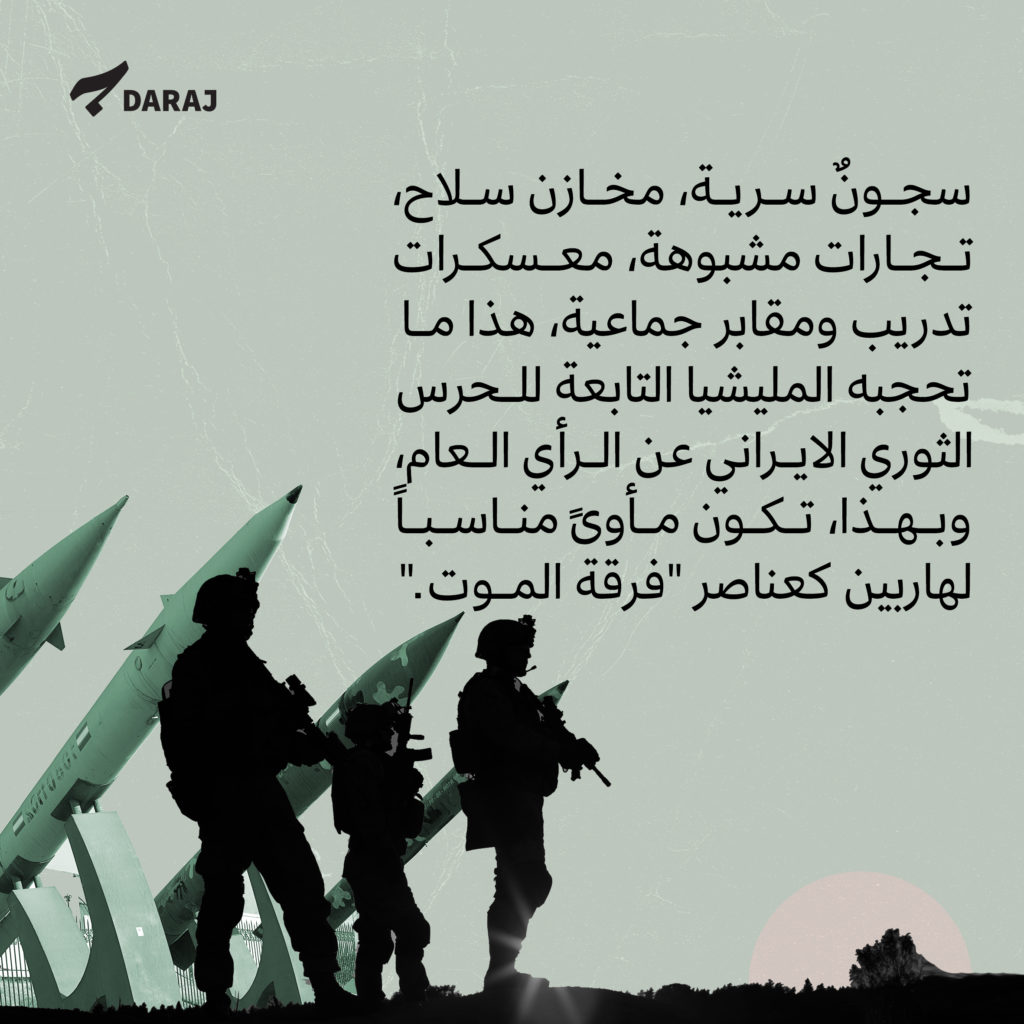
Forbidden Land
We searched for information leading to possible locations where the fugitives may escape. It was a difficult mission due to inconsistencies in information. Most of the sources were unanimously saying that Ahmed Tawisa was
“smuggled” during the arrests campaign, to nearby Iran which has open borders with Basra.
A source familiar with the progress of the investigations confirmed that (Alaa al-Ghalibi and Abbas Hashem) later settled in the Jurf al-Sakhar area in Babel Governorate (60 km south of Baghdad), after being smuggled there with the help of (Abu Yasser).
Jurf al-Sakhar is considered a depopulated area, or a military barracks, that Hezbollah Brigades militia took control of after it was liberated from ISIS in late 2014, and its people were prevented from returning to it.
Thin threads are not enough to solve this region’s mysterious mystery: secret prisons, weapons depots, suspicious businesses, training camps and mass graves, this is what the Iranian Revolutionary Guard militia keeps from public opinion, and in this way, it is a suitable shelter for fugitives like members of the death squad.
More than 6 years after its liberation, and three different governments, up to the Al-Kazemi government, no one is able to lift the mystery siege of Jurf al-Sakhar. Last March, Prime Minister political advisor Mashreq Abbas attended a dialogue session in one of the “Club House” application rooms to answer the inquiries of young activists, especially those who were threatened and persecuted after the October demonstrations. Inquiries were made about the Jurf al-Sakhar area and why the government has not yet been able to control it and return its people. Abbas avoided answering the question, using the phrase “the situation is difficult.”
Until recently, a close source in the intelligence had suggested that Ahmed Tawisa was with his colleagues in Jurf al-Sakhar, but he added: “Yes, he returned to Iraq, perhaps he hid in Jurf al-Sakhar for a limited period, but it is also possible that he is now in Baghdad.”
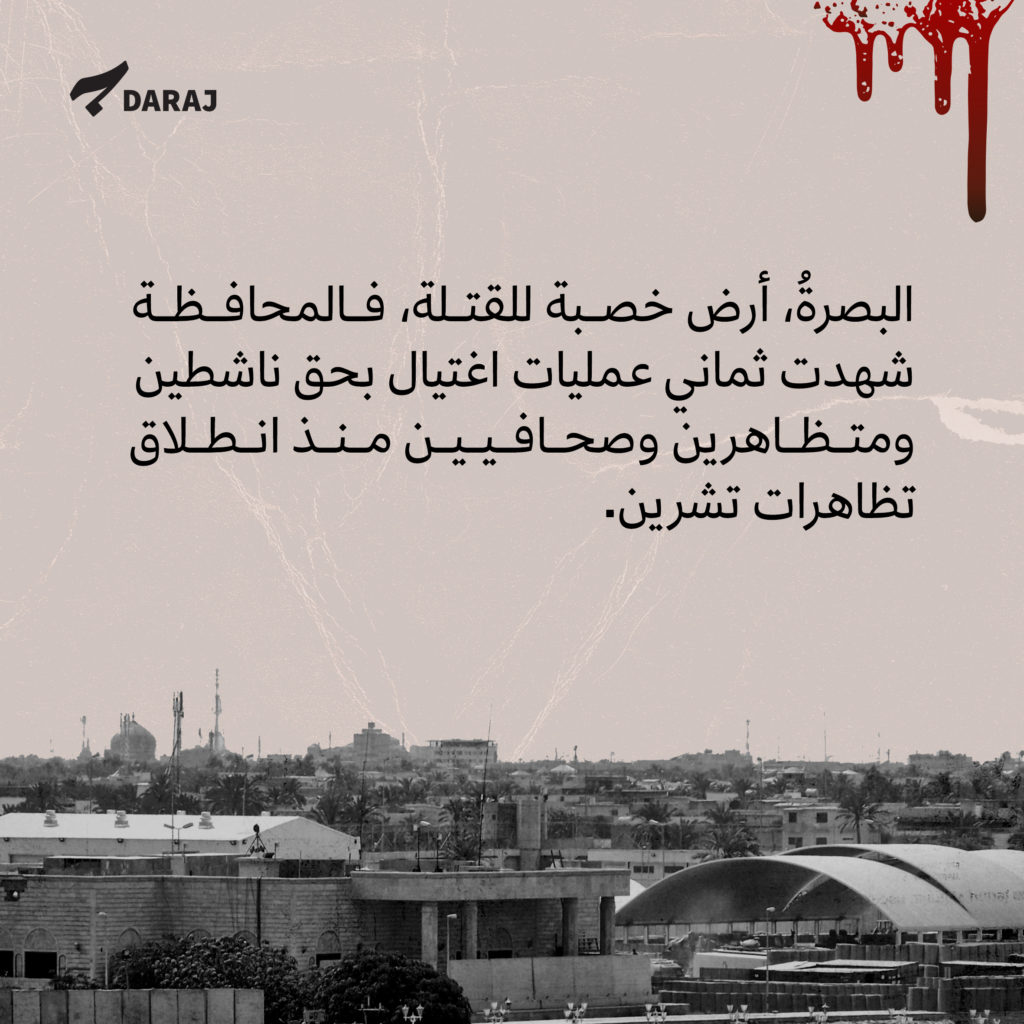
“No one can stop them, they can move with the identities they want and use the cars they choose, and they can settle wherever they want,” says a lawyer who tracks the militia files.
According to the information that we were able to access, there are several headquarters for the Popular Mobilization Forces and the armed factions inside the green zone, most of them are secret safe houses, but the officially or semi-officially declared locations are:
- The main headquarters of the Popular Mobilization Authority
- A headquarters of the Popular Mobilization Security near the Council of Ministers
- A military headquarters opposite the presidential palace, which contains many armed soldiers, the nature of which is unknown.
- Directorate of Technical Equipment
- Abu Mahdi Al-Muhandis residence, which became controlled by the Brigades, under the name of the Popular Defense Brigades
- A headquarters for Asa’ib Ahl al-Haq, under a cultural banner
In addition, most of the Hashd leaders live in the green zone, with large protections belonging to their factions.
The source who kept up with the investigations did not deny this information, adding that “Tawisa may be in one of the fortified headquarters in the Green Zone, which are affiliated with the Popular Mobilization Forces, while information about Alaa Al-Ghalbi and Abbas Hashem still indicates they are in Jurf al-Sakhar”.
It was not possible to have access to the confessions of the detainees nor the investigation documents, but two different sources confirmed that those who shot Ahmed Abdul Samad and Safa Ghali were Ahmad Tawisa, Hamzah al-Eidani and Alaa al-Ghalibi, while Abbas Hashem was the one who sponsored the logistics of the operation and monitored the roads.
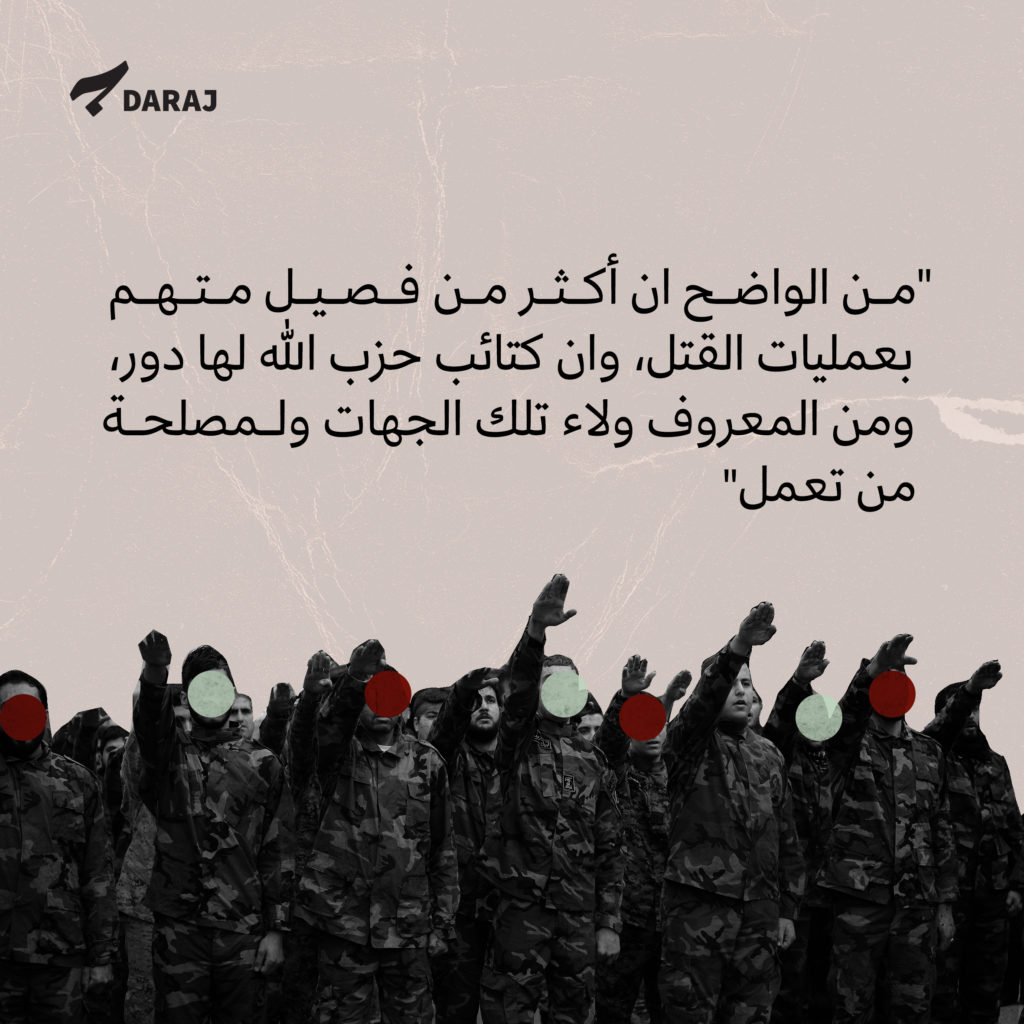
Ahmed Tawisa:
The Tawisa family has a history of violence: In the outbreak of sectarian war in 2006, Ali Tawisa, the elder brother of Ahmad, carried out the assassination of Sheikh Yusuf Al-Hassan, the official in charge of the Muslim Scholars Association in the province (Sunni), the imam and preacher of the Basra Great Mosque and his bodyguard, in an armed attack in front of the mosque, which is located south of the city. Ali died after his injury.
A source in the Popular Mobilization Forces said: “Ahmed was recruited instead of Ali Tawisa after his death.”
Ahmed Tawisa has great influence and power in Basra, and he can be classified as the most dangerous man in Basra, in association with others, some of whom are free to date, and he acquires several investments in the governorate, and he also has an investment license in one of the port berths, some of which are under the control and influence of militias.
The berth is being used, according to a merchant from Basra who requested anonymity, for arms and illegal imports trade.
In addition to his new home in the “Twaisah” area, which is estimated at $ 600,000 worth, Ahmed Tawisa has many properties, including a group of cafes and restaurants on Al Wofood Street in Basra, specifically in the area between the “exhibition intersection” and the “Italian bridge”, which were green areas before the parties confiscated and split it into pieces of 10 meters in width by 20 meters on length, all of which are leased, for a monthly rental ranging between 2000 and 2500 dollars.
In July 2017, and in the midst of disagreements between the militias, Ahmed Tawisa and three others (Ihssan Faleh Yaze’, Yassin Al-Wafi and Haidar Abdul Hassan who is also known as “Haydar Shambousa”) were arrested by the intelligence of the Peace Brigades militia which is affiliated with the leader of the Sadrist movement, Muqtada al-Sadr who had adopted a different approach on the militia context, and he addressed some of these militias in one of his speeches as “impudent militias”. This speech implied that al-Sadr and his militia had untied itself from the usual line of militias in Iraq, but in reality, there was a power struggle over areas of influence and gains, as some Hashd leaders stood against recognizing members of the Peace Brigades as part of the crowd for a long time.
The four men arrest by the peace brigades militia was not for long, as even before they were handed over to the Basra Operations Command and its police, there were pressures, which ended with the visit of the deputy head of the crowd at the time, Abu Mahdi al-Muhandis, to the operations headquarters, and with the influence he had on the course of the investigation, all of the four men were released.
According to a security source, one of the intelligence officers who worked on that case was later targeted by an explosive device in his car. We tried to find out the fate of the officer or the place where he works now, but no one accepted to comment, fearing for his safety.
Post link from a Sadrist page: https://www.facebook.com/1701075720176511/posts/1938739839743430/?d=n
In a video clip during the investigation of the Peace Brigades with the group’s members, Ihsan Yaze’ confesses to several crimes, in association with Tawisa, Yassin Al-Wafi and Haydar Al-Mayahi, and in coordination with political figures and merchants, in return for political and financial interests.
What we know is that Yaze’ was freed in 2017 after the intervention of the crowd leaders, led by Abu Mahdi al-Muhandis, as was the case with the other detainees who were arrested by the brigades ‘Saraya’ and handed over to the Basra Operations Command. We could not confirm Yaze’ fate after the death squad members were arrested, or if he were one of the detainees whose arrests were not announced, or if he fled.
Another Hamzah …
In Basra, there is another Hamzah, other than Al-Eidani, who was arrested among the members of the death squad. He is Hamzah Al-Halafi, who “also works in the Ahmed Tawisa group”, said Ismail Musabbah Al-Waeli.
Al-Waeli and another source in the security department of Basra Governorate indicated that both Hamzahs (Al-Eidani and Al-Halafi) were members in the Al-Fadhila Party of the Shiite reference Muhammad Al-Yaqoubi before 2010, who “carried out assassinations, robbery, oil smuggling, kidnapping and extortion, and who formed the military wing of Al-Fadhila Party “.
Ismail Musabbah asserts that Hamzah Al-Halafi “was one of the closest to Sheikh Al-Yaqoubi.”
We could not reach the date of the two Hamzas association with the Tawisa group, but information indicates that Hamzah al-Halafi is responsible for the economic file of the Hezbollah Brigades in Basra, which extends to large companies, control over smuggling routes and impose of royalties.
Before the announced death squad, a group was arrested, and nothing was announced. We tried to verify this information. A source close to Al-Kazemi did not deny this, and he did not deny the suspicion that this group was involved in the assassination of the activist Tahseen Osama inside his private small company on August 14, 2020. His uncle Hussein al-Shahmani confirmed in earlier press statements that “one of those involved in the assassination left Iraq and then returned with six others who are still free, and no action has been taken against them so far”.
Al-Shahmani confirmed at the time that the victim’s father filed a lawsuit before the legal authorities, including the names of the defendants according to the investigations and the testimonies they obtained, which indicated the involvement of (large heads) in Basra in the case, but no serious action was taken, and the file was closed.
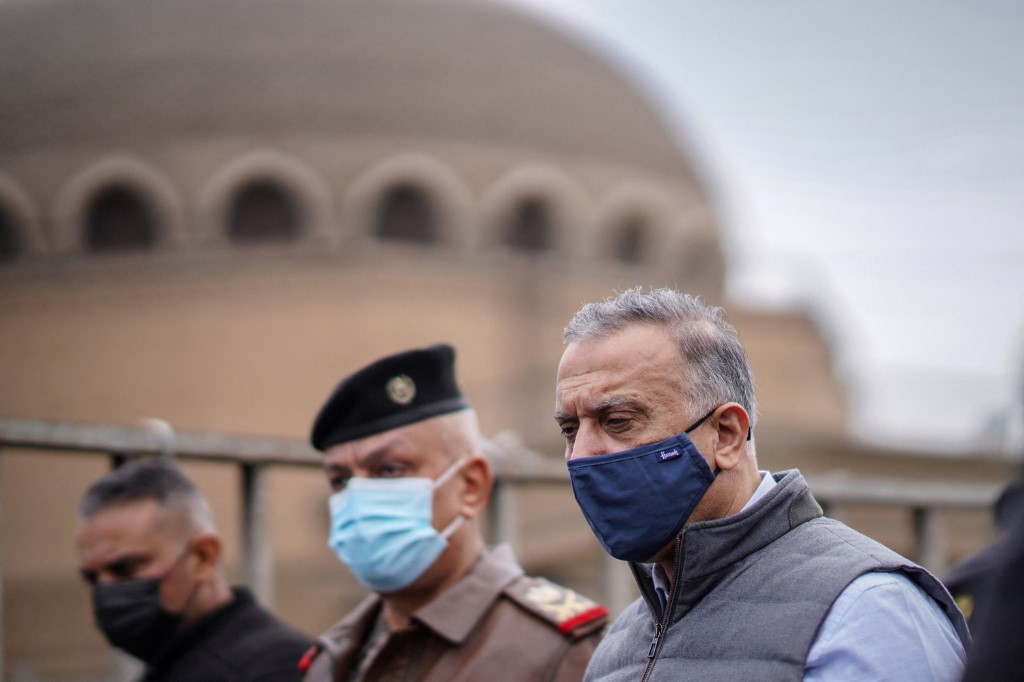
Other Death Squads and “Pressures”
Basra is a fertile ground for killers. The governorate has witnessed eight assassinations against activists, demonstrators, and journalists since the start of the October 2019 demonstrations: (Hussein Adel, Sarah Talib, Ahmed Abdul Samad, Safaa Ghali, Tahsin Usama, Reham Yaqoob, Umm Jannat and Mujtaba Al-Zajil), in addition to killings on clan or sectarian motives, or random killing during demonstrations.
“There is more than one death squad,” Ismail Al-Waeli said in his interview with us, adding: “Two groups were arrested, the first belonging to Asa’ib Ahl al-Haq and the other to the Badr Organization. The two groups have nothing to do with the first group – the death squad whose arrest was announced – which is the one involved in the killing of my brother and journalist Ahmed Abdul Samad”.
We had difficulty confirming this from our sources, but no one denied what Al-Waeli said, who also referred to the involvement of a person named (Q.A) in leading and heading the group affiliated with Asa’ib Ahl al-Haq, who is a brother of one of the Iraqi parliament representatives from al “Sadiqoun” bloc representing Asa’ib Ahl al-Haq.
“The deputy pressured the security authorities and the investigation process of his brother in Basra until he was able to transfer him to Baghdad along with the Popular Mobilization Forces as a member of the crowd,” Al-Waeli said.
The second group, which is affiliated with the Badr Organization, is led by “Ahmed Abdul Zahra,” who is affiliated with the Fourth Brigade of the Badr Organization, according to Al-Waeli, who confirmed that Abdul Zahra “killed a former Iraqi army officer named Hussein Al-Bahadli and killed Mrs. Fawziya (a school principal) under the pretext of their love for Saddam Hussein.”
Al-Waeli added, “Ahmed Abdul-Zahra confessed to killing Rahim Sajit, who was a deputy officer in Saddam’s intelligence department, and also to the killing of Mazil Abu Harbi, who were both from Al-Saadoun family in Basra.”
According to Ismail Al-Waeli, most of the detainees, who have been announced and who have not yet been announced, admitted to watching and following up activists and journalists who supported the demonstrations.
A source close to Prime Minister Al-Kazemi did not deny this, nor did he deny or confirm the existence of other detainees whose names have not been announced.
Investigations’ change the course
It was clear that Ismail Musabbah Al-Waeli was keen on one issue more than others: “If we do not increase our efforts, they will destroy everything and take us back to the first square.” In his words, Al-Waeli means that there is a need to shed light on the political pressures exerted behind the scenes to change the course of the investigation, specifically those pressures that aim to expel (Brigadier General Mithaq), the director of Basra Intelligence, and replace him with another figure who is closer to Iran and its Iraqi arms. Al-Waeli says: “The name of the alternative that they are pushing for is (Muhammad Jumaa).”
Ismail Musabbah, who was close to the Shiite reference Muhammad al-Sadr, the father of the leader of the Sadrist movement, Muqtada al-Sadr, and who became known for his rivalry with the son, continues: “Hadi al-Amiri, Faleh al-Fayyad, Abu Fadak al-Muhammadawi, Ahmad al-Asadi, and Ammar Abu Yasser, leader of the Basra crowd, they all met with Interior Minister Othman Al-Ghanimi and they asked him directly to make the swap ”
During the same “Club House” dialogue session, during which he was asked about Jurf al-Sakhar, Al-Kazemi’s advisor, Mashreq Abbas, denied that the prime minister was able to protect himself. His young panelists asked: “If he cannot protect himself, how will he be able to protect us?” Abbas replied: “The situation is difficult”
In an interview with us, a source close to Al-Kazemi described Al-Kazemi situation as embarrassing, “he is under great political pressure from the pro-Iran political currents who possess weapons. All government entities involved in the case came under pressure when the criminals were arrested.”
On June 25, 2020, that is, less than two months after Al-Kazemi assumed the premiership (May 7, 2020), a force from the Counter-Terrorism Service arrested 14 members of Kata’ib Hezbollah militia from a headquarters in the “Bo’aitha” area, south of Baghdad. The operation resulted in the seizure of several missiles ready for launch. At that time, the military spokesman for the prime minister, Major General Yahya Rasoul, said that the operation “aimed to restore the sovereignty of the state.”
Within hours of the operation, the streets of Baghdad turned into something like Mosul when it was stormed by ISIS: cars of various kinds roaming the streets with heavy and medium weapons.
Armed men arrived that night to the vicinity of Al-Kazemi’s headquarters and filled the heavily fortified Green Zone streets and openly threatened Al-Kazemi and his team. Finally, they succeeded in the releasing of the detainees.
After this incident, the word “pressures” became associated with the governmental authorities’ answers to any question regarding assassinations, murders, and uncontrolled weapons.
The government did not indicate the source of these pressures, while political analyst Hiwa Othman said that “the pressure on the government comes either from the Shiite political leaderships associated with these groups and factions, or from the Islamic Republic of Iran that sponsors these factions.”
Meanwhile, the head of the Citizenship Party, Ghaith Al-Tamimi, believes that Al-Kazemi government has failed to face such major challenges, adding: “To this moment, it is the government that is complicit with the killers and armed groups, and I don’t think it has any intention to resolve this file.”
Ghaith Al-Tamimi links the failure of Al-Kazemi government to the term “pressures”, considering it as evidence of the complicity between the government and armed militias, adding that: “This exposes the mutual interest between these armed groups and the official authorities, meaning that there is a powerful deep state, and they themselves are practicing terrorism and pressuring to cover it.”
After a year of investigations and two and a half months after the death squad was announced, the security services did not provide any information about the detainees’ ties and the party to which they belong, which stood behind and protected them for years and which enabled them to be smuggled, despite their involvement in previous events and having their names repeated as suspects of murder and corruption.
The concerned authorities refuse to comment on the news of the presence of some wanted men in Jurf al-Sakhar area, their travels to Iran and the possibility of their fleeing to it at the time of arrest, or the accusations that the crowd headquarters in Basra had harbored them.
A lawyer who is following the case says, “It is clear that more than one faction is accused of the killings, and that Kata’ib Hezbollah had a role, and it is known who these parties are loyal to and who they work for”. He wondered: “If the process of arresting these small fish was so difficult for the government and its resources that consist of hundreds of thousands of individuals, then how can one day they catch the big fish?”.
The lawyer adds, “Simply revealing some names has no value unless the parties to which they belong are announced, as these are not personal crimes … Unfortunately, indications show that they will close the case after some internal and external settlements, and the wanted killers will continue to move freely, and we will not be surprised if tomorrow we hear some of them disappeared or fled”.
Investigative Reports
Investigative Reports","field":"name"}],"number":"1","meta_query":[[]],"paged":1,"original_offset":0,"object_ids":21682}" data-page="1" data-max-pages="1">






